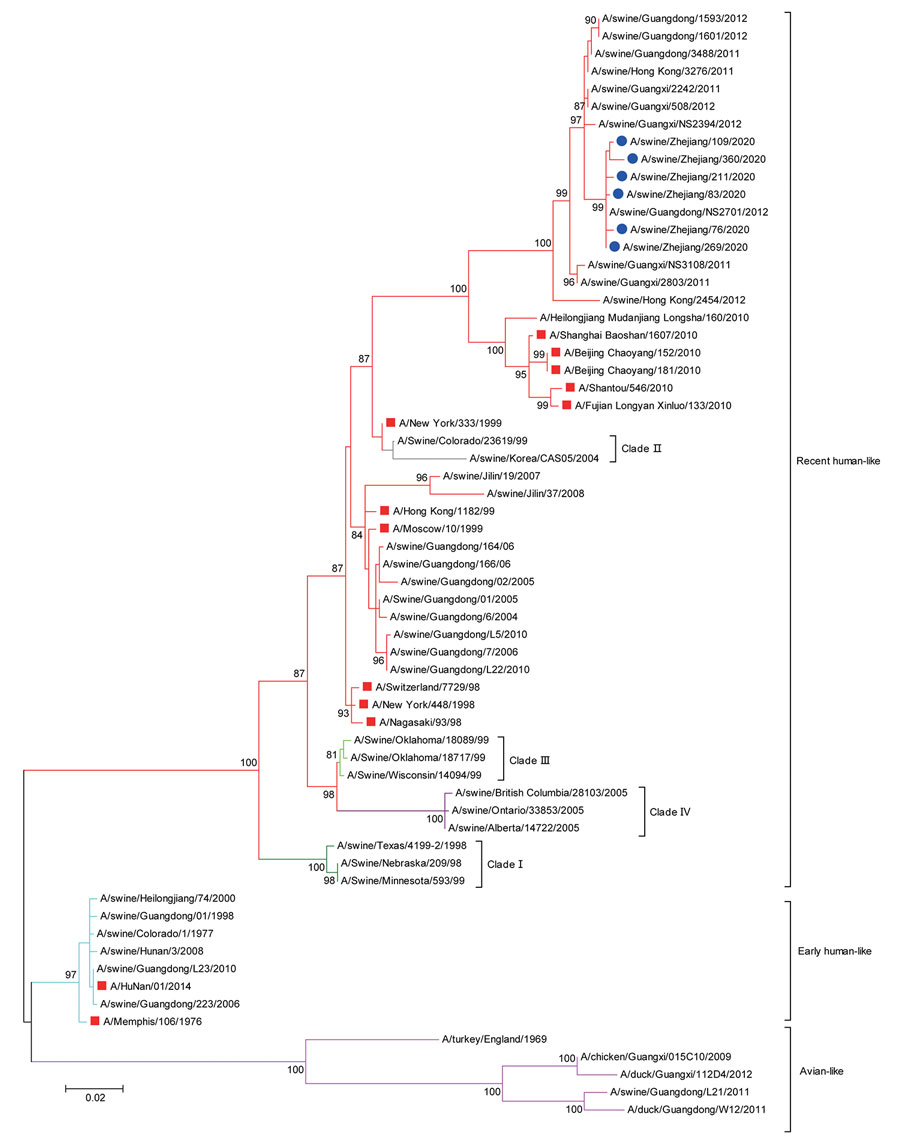Volume 28, Number 7—July 2022
Dispatch
Potential Threats to Human Health from Eurasian Avian-Like Swine Influenza A(H1N1) Virus and Its Reassortants
Figure 2

Figure 2. Maximum-likelihood phylogenetic tree of hemagglutinin genes of novel swine influenza A(H3N1) viruses from pigs on pig farms in 6 provinces of China (blue circles) and reference sequences from humans (red squares). The phylogeny of available sequences of related viruses from GenBank and GISAID database (https://www.gisaid.org) and the 6 HA genes sequenced in this study were inferred by using MEGA version 7 (https://www.megasoftware.net) under the general time-reversible plus gamma distribution model with 1,000 bootstrap replicates. Scale bar indicates substitutions per nucleotide.
1These first authors contributed equally to this article.
Page created: April 13, 2022
Page updated: June 18, 2022
Page reviewed: June 18, 2022
The conclusions, findings, and opinions expressed by authors contributing to this journal do not necessarily reflect the official position of the U.S. Department of Health and Human Services, the Public Health Service, the Centers for Disease Control and Prevention, or the authors' affiliated institutions. Use of trade names is for identification only and does not imply endorsement by any of the groups named above.